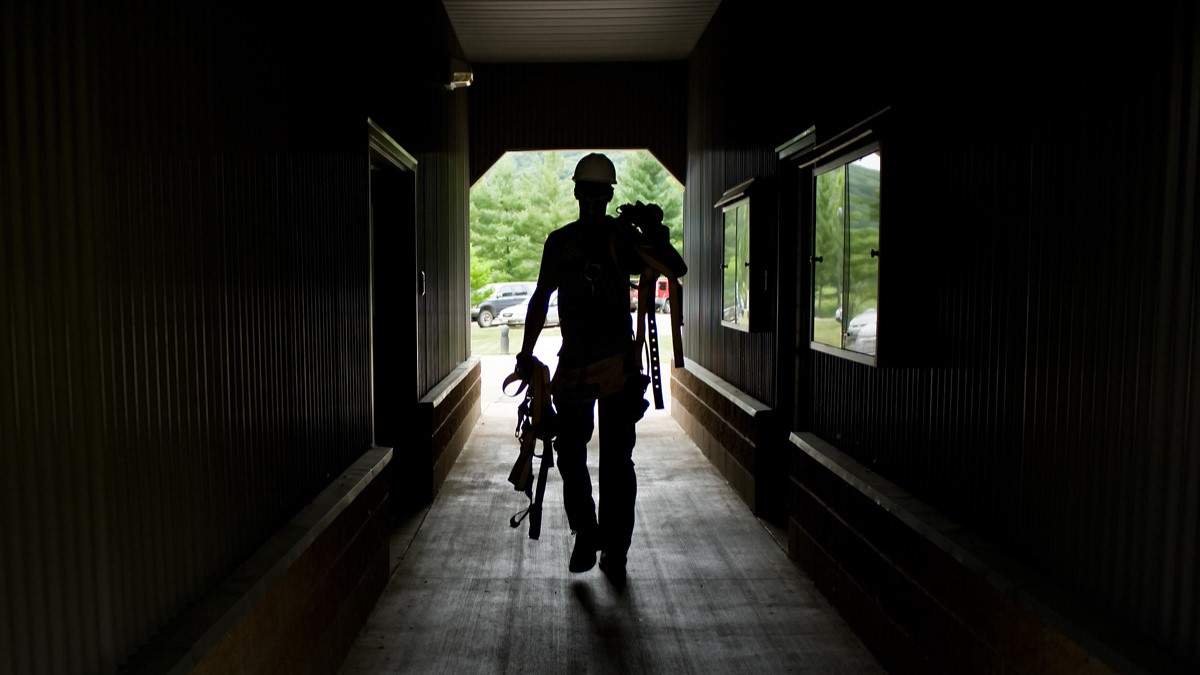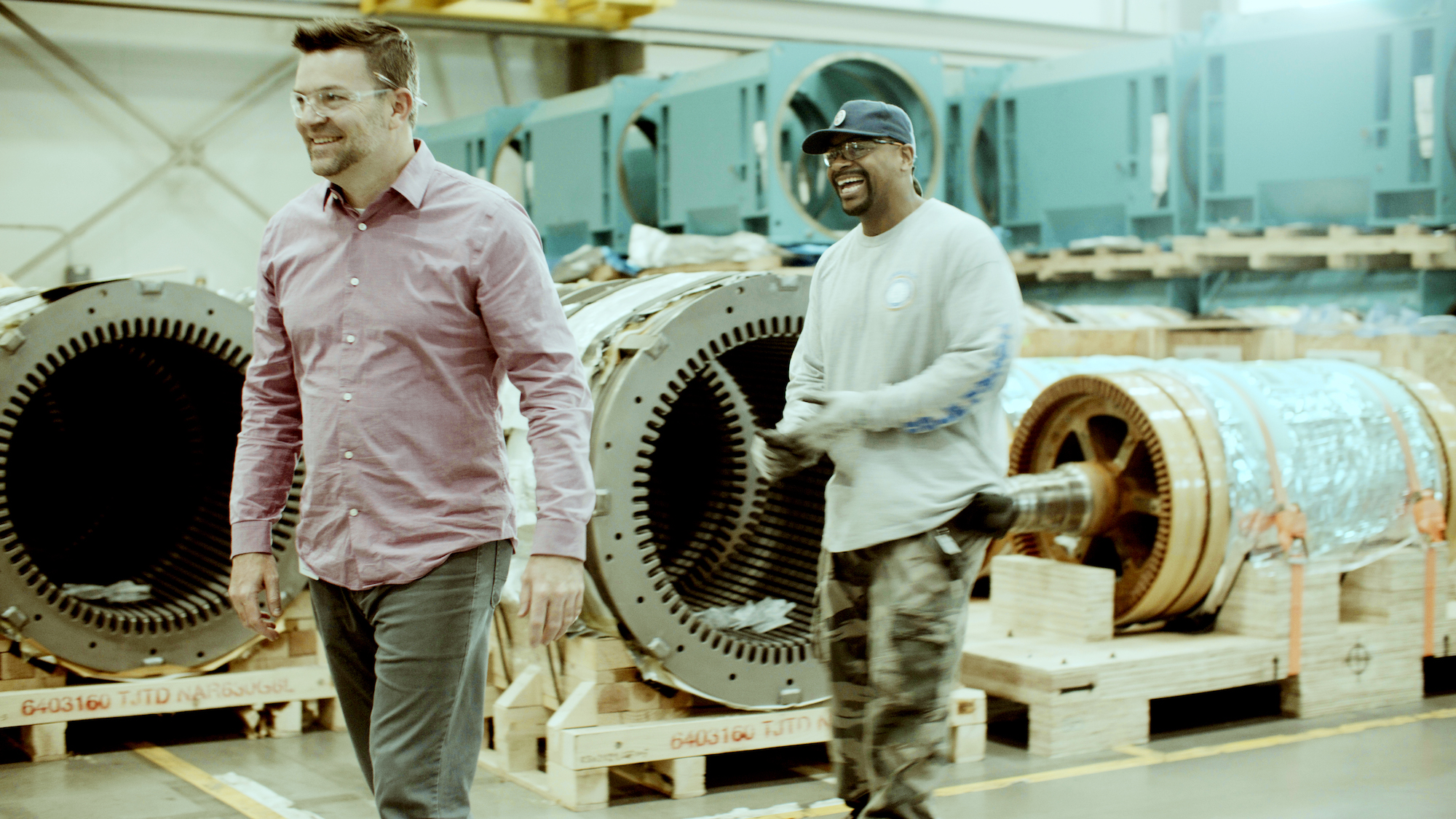Momentum is building across the U.S. to achieve a just and inclusive economy powered by clean energy. It represents the largest shift in our economy since the Industrial Revolution—and with it comes an enormous opportunity to build power that has been systematically stolen from working Americans over the last century. Leading states are beginning to turn the tide, though, and state climate champions are increasingly embedding strong labor standards into their climate and clean energy laws. As Inflation Reduction Act (IRA) dollars flow to states with their own incentives for strong labor agreements and apprenticeships, momentum is building for policies that ensure workers and communities prosper in our clean energy future.
One key place to start? Rooting Clean Energy Standards, which can transition the grid to clean energy, with worker-friendly policies to make sure that massive investment in clean power rebuilds the middle class, too. So far, nine states, plus Washington, DC and Puerto Rico, have enacted 100 percent clean energy standards. Among those leadership states, several stand out in how they enshrined strong labor standards in their clean energy legislation. That’s the future we must build.
Building labor standards into climate action can ensure every worker and community benefits from the clean energy economy twice over. State and local governments are where that change happens. Michigan, Illinois, and New Mexico exemplify different and meaningful approaches to this issue. Their clean energy standards show how labor policy provisions can advance workers’ interests. As we enter a critical year for the country, they are showing how to build climate policy that lifts up working people.
Michigan
Michigan, the state currently leading the Midwest in clean energy job growth, just passed a package of clean energy bills that set a high-water mark with some of the strongest standards for labor protections and good-paying jobs nationwide. The legislation, which puts Michigan on track to achieve 100 percent clean energy by 2040, builds institutional capacity for supporting workers while establishing key standards to ensure high job quality.
The state’s new Community and Worker Economic Transition Office, housed within its Department of Labor and Economic Opportunity, is designed to lead planning and stakeholder engagement efforts for the clean energy transition. The office’s initiatives will focus on supporting workers and communities to ensure they can take full advantage of the good-paying clean energy jobs of the future. And since Michigan is home to the auto industry, the office will also focus on supporting internal combustion engine vehicle workers, workers in the building and construction trades, and others.
A broad suite of labor standards undergirds the Transition Office’s work. Michigan’s clean energy labor standards are among the strongest in the country and include:
- Requiring developers to hire Department of Labor-certified apprentices for energy facility construction and maintenance, which ensures a quality education for the apprentices and prevents contractors from using low-wage labor disguised as an apprenticeship
- Setting a minimum prevailing wage and benefits standard for workers who construct and maintain utility-scale clean energy facilities
- Requiring clean energy developers to enter into project labor agreements (PLAs) or collective bargaining agreements for the construction of utility-scale public projects and when public funds—like the billions from the Inflation Reduction Act—are being used. Such agreements give workers the opportunity to negotiate their pay and benefits before construction begins
- Preferencing projects that hire locally within the host community
- Establishing the formation of community benefits agreements on utility-scale public projects or when public funds are being used, which can secure resources for workforce development and other local needs
- Compelling energy providers to invest in a diverse energy efficiency workforce, that focuses on hiring from low-income and disadvantaged communities, as well as those transitioning from impacted industries
This broad set of required labor standards is arguably the most comprehensive in any state’s climate package. Befitting Michigan’s historic role in building America’s industries, and its middle class, these policies are a model to build our new economy. By enacting such extensive protections into law, Governor Gretchen Whitmer’s administration and legislative leaders have ensured that clean energy jobs in Michigan can be good jobs.
Illinois
Change is rippling out through the industrial heartland. In 2022, the Illinois state legislature passed the Climate and Equitable Jobs Act (CEJA). The law is sweeping in scope—in addition to setting a 100 percent clean power target for 2045, CEJA includes electric vehicle rebates; robust funding for new renewable energy; and historic investments in workforce development, environmental justice, and contractor equity.
On that last point, Illinois stands out from its peer states. An analysis by the Illinois Clean Jobs Coalition found that CEJA invests $82 million each year in workforce development and contractor equity programs, and $41 million annually in former fossil fuel communities and workers. Those investments are supported by an unparalleled array of programs targeting the funding for maximum impact. A non-comprehensive list of those programs includes:
- 13 Clean Job Workforce Hubs across the state, run by community-based organizations, to provide job training and career pipelines
- Returning Resident Clean Jobs Training Program to train soon-to-be-released incarcerated people for jobs in the solar industry
- Energy Transition Barrier Reduction Program, built to help disadvantaged populations access workforce development resources
- Displaced Energy Worker Dependent Transition Scholarship Program, providing full-ride scholarships to state schools for the children of displaced workers
In addition to providing extensive financial resources, CEJA features provisions similar to those in Michigan’s clean energy package, including prevailing wage and PLA requirements for utility-scale clean energy projects and the creation of an Energy Transition Workforce Commission to study and report on the impacts of the clean energy transition. Illinois’ strong focus on training pipelines, with special attention paid to disadvantaged communities and populations, exemplifies a justice- and worker-centered approach to clean energy policy.
New Mexico
Strong labor policies are equally important in states that have played a key role in producing energy. After all, as oil and gas fields begin to be replaced with solar power, wind turbines, and new transmission lines, workers and communities need to be part of that new energy too. New Mexico’s 2019 Energy Transition Act (ETA) sets a series of clean energy targets, culminating in a mandate to reach a fully zero-carbon grid by 2050. As the name implies, the legislation also includes unusually strong provisions for workers transitioning out of the fossil fuel economy. With a state economy heavily dependent on oil and gas, New Mexico’s commitment to 100 percent clean power is especially laudable—and its emphasis on a fair transition is especially critical.
The ETA establishes a series of requirements and funding sources that provide for displaced and transitioning workers. Those include:
- Requiring severance pay and job training funding for employees losing their jobs “as a result of an abandoned [coal-fired power plant] and any associated mine that only services” that plant
- Preferentially hiring energy workers who live in New Mexico
- Establishing an Energy Transition Economic Development Assistance Fund to incentivize hiring displaced workers, support apprenticeship programs for displaced workers, and more
- Explicitly setting aside resources for “affected communities” economically impacted by the transition away from fossil fuels
Like Michigan, New Mexico also requires that energy developers hire Department of Labor-certified apprentices on construction projects. And for all of these programs, implementation and enforcement will be critical for delivering on these ambitious programs—we’ve already seen one case of corporate executives shorting workers on their owed severance pay.
And all this focus is translating into real dollars. New Mexico is about to be home to a multi-billion dollar transmission line to take solar energy to market, which is being paired with a major Project Labor Agreement with the Electrical Workers’ Union to support workers and communities. Good policies pay off: Taken together, these supportive policies demonstrate the state’s commitment to providing for the workers and communities shifting out of the fossil fuel economy and into the clean energy sector.
So, What Does All This Tell Us?
Drawing on the ambitious policy agendas implemented by these trailblazing states, we can identify three fundamental elements of the strong labor provisions that should accompany all clean energy legislation.
1. Robust Job Quality Standards
We’ve already seen some employers take advantage of the clean energy transition to cut pay and diminish worker protections. Climate policymaking must head off those risks by instituting clear job quality provisions, including requiring prevailing wages, PLAs and collective bargaining agreements, and other pro-worker standards.
2. Centering Environmental Justice
Climate policy does not automatically advance environmental justice; to do so, clean energy legislation must specifically provide for low-income and Black, Indigenous, and people of color (BIPOC) communities. Environmental justice considerations must, in turn, be central to the labor provisions incorporated into clean energy legislation. Lawmakers can design the standards and investments that protect workers’ interests to connect jobs and investments with communities that have historically suffered disparate environmental and economic burdens.
3. Training and Workforce Development
State climate action will only succeed if there are enough skilled workers to install the solar panels, manufacture the wind turbines, maintain the hydrogen pipelines, and so on. That’s why clean energy legislation should provide resources for training the new generation of clean energy workers and transitioning skilled workers out of the fossil fuel economy.
Michigan, Illinois, and New Mexico collectively demonstrate how these key elements can be combined—and, critically, how they can be tailored to the local political and economic context. It makes perfect sense that Michigan’s Transition Office should provide for autoworkers; by the same token, New Mexico’s clean energy legislation would fall short if it didn’t attend to workers displaced from the fossil fuel industry. There is no one-size-fits-all approach to enshrining high-road labor standards in clean energy legislation, but we know the full suite of policy tools at hand.
Of course, these three states aren’t the only pioneers on this front. Washington provides robust incentives for apprenticeship utilization and paying prevailing wages, and New York helped set the stage for the federal Justice 40 initiative by aiming to set aside as much as 40 percent of all climate investments—including spending on workforce development—for environmental justice communities. Trailblazing state leaders have offered several models for ambitious, worker-centered clean energy legislation.
Meanwhile, the Biden administration is providing strong federal incentives and funding streams for states to sustain worker-forward climate action. The Environmental Protection Agency’s (EPA) Climate Pollution Reduction Grants (CPRG) program will disburse $5 billion in grants to help states, air pollution control agencies, Tribes, and local governments develop strong climate pollution reduction strategies. EPA has emphasized that the CPRG program will fund plans that “incorporate high labor standards, emphasize job quality, and support equitable workforce development”—an ideal resource for states interested in aligning their clean energy strategies with workers’ interests.
Likewise, a diverse set of clean energy tax credits support states pursuing high-road labor practices. Via the direct pay mechanism, states can avail themselves of credits covering clean energy construction and production, advanced manufacturing, and more. For those states that meet certain prevailing wage and apprenticeship requirements, the value of the Investment Tax Credit, Production Tax Credit, and Advanced Energy Production Credit increases five-fold.
State leaders have an opportunity—and a responsibility—to center workers’ interests in clean energy legislation. That opportunity is not limited to CES bills; in 2023, New York legislation to fund public power infrastructure incorporated historic standards for skilled union labor. The path forward is clear. Every state should tailor their climate policy agenda to their own needs—and every clean energy package should include high-road labor standards suited to that context.



